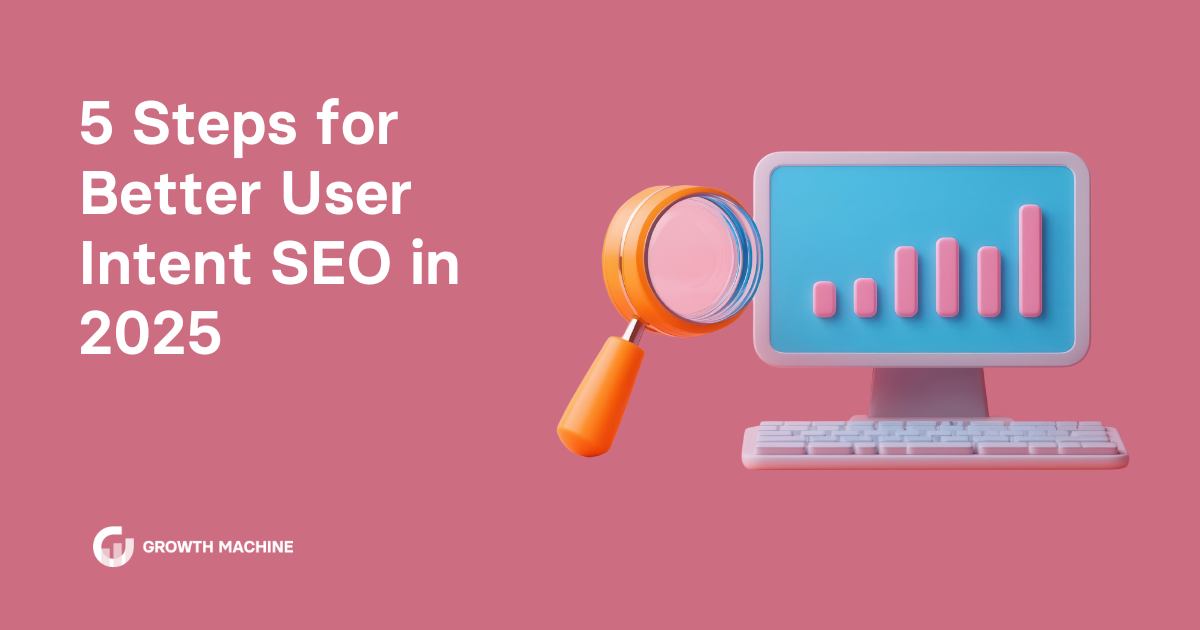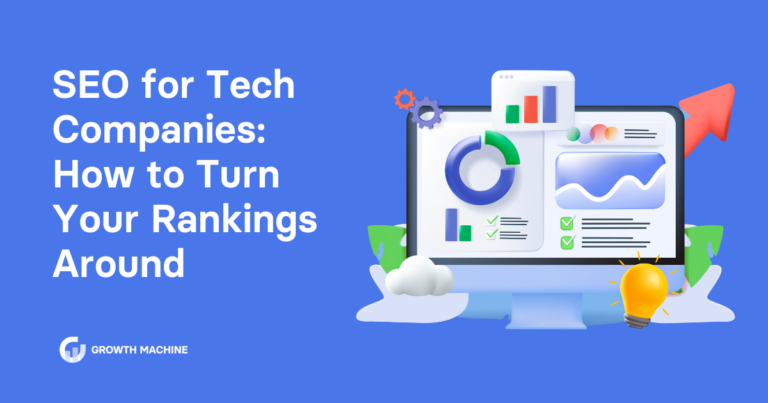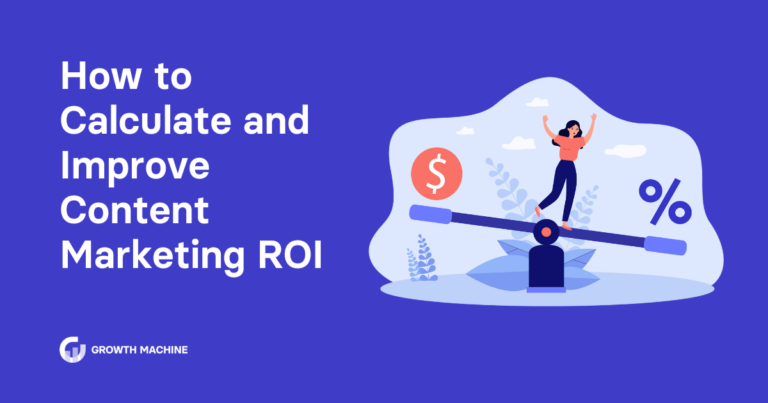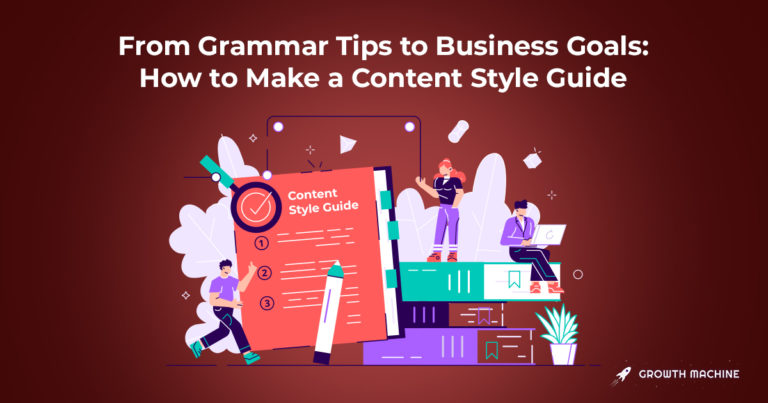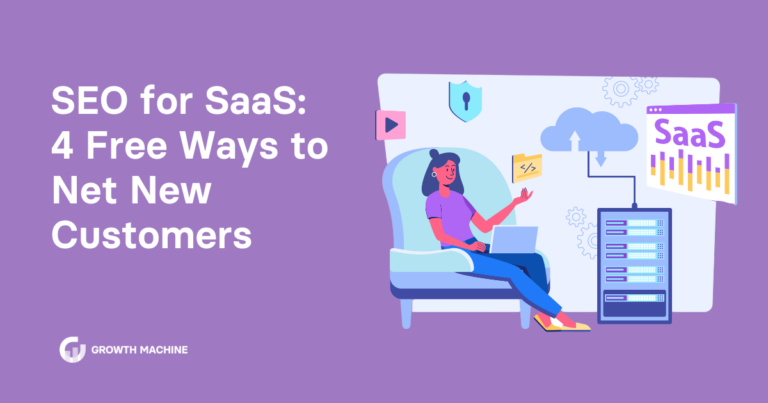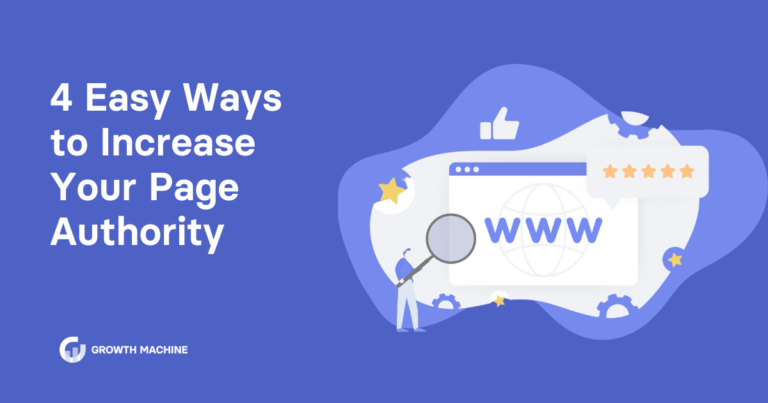5 Steps for Better User Intent SEO in 2025
The landscape of search engine optimization (SEO) has evolved dramatically since the early 2010s. What was once about stuffing content with specific keywords has transformed into something far more sophisticated: understanding and optimizing for user intent SEO.
Today’s search engines are smarter than ever, using advanced algorithms to understand not just what searchers type but what they actually want to accomplish. With recent Forbes data showing that 26% of searches result in no clicks, it’s clear that matching user intent isn’t just about rankings — it’s about creating content compelling enough to earn those valuable clicks.
At Growth Machine, we’ve helped hundreds of businesses transform their content strategy by focusing on this crucial fact.
What Is User Intent in SEO?
User intent (also known as search intent) represents the underlying goal behind every user search query.
When someone types a phrase into Google, they’re signaling that they have a specific need and are expecting a certain answer.
Understanding these signals is the key to creating content that truly serves your audience and ranks well in search results.
For example, someone searching “yoga mat” on Google could have various intentions. From learning about materials to comparing prices or seeking buying guides, identifying the user’s intent makes all the difference between content that performs and content that falls flat.
Why User Intent Matters for Your Business
In our work with clients across various industries, we’ve consistently seen that aligning content strategy with searcher intent is the most surefire way to improve content marketing ROI.
Here’s how crafting quality content that meets users where they are delivers measurable results:
- Higher Search Rankings: Google rewards content that best serves its users’ needs.
- Reduce bounce rates: Content that matches user intent keeps visitors on your site longer, helping them develop a deeper relationship with your brand.
- Landing a SERP feature: For certain types of informational content, you can land a featured snippet, meaning you’ll be featured above all the other search results.
- Better Conversion Rates: Understanding user intent SEO helps guide users through your funnel more effectively.
Breaking Down the 4 Types of Search Intent
When it comes to optimizing your business’s content, here are the main categories of search intent you need to understand:
1. Informational Intent
Informational searches make up the majority of search queries. So, when it comes to user intent SEO, you’ll want to focus on hitting users seeking knowledge, answers, or instructions.
Informational queries are easy to spot, as the user’s query will commonly contain question words (how, what, when, and why) or educational phrases such as “how to” or “tips for x.”
Optimization Strategies for Informational Queries
To increase your odds of ranking high for informational queries in your niche, you can:
- Create comprehensive how-to guides
- Answer related questions within the content using ‘People also search for’
- Include relevant data and statistics where possible to build credibility
- Incorporate visual aids (such as charts or infographics)
- Include expert insights and industry examples from reputable sites
2. Navigational Intent
These searches are conducted by users looking for specific websites, tools, or platforms.
While they’re less common than informational queries, they’re crucial for brand awareness and creating a positive customer experience.
Navigational searches usually contain the brand or a specific product name directly (e.g., Growth Machine blog), but they can also include platform-specific terms or location-based queries.
Optimization Strategies for Navigational Intent
Brand presence is key here. To ensure your user intent SEO points directly to your brand:
- Ensure your brand name or product/service is clearly stated in your website’s titles and meta descriptions
- Make sure you have a clear site navigation
- Include relevant brand terms and phrases in key page elements
- Update your Google My Business profile and other directories with consistent NAP (Name, Address, Phone) information
- Optimize for local search terms where applicable
3. Commercial Intent (Commercial Investigation)
Commercial searches represent users in the consideration phase or people who are actively researching products or services before making a decision.
For instance, searchers with commercial intent might be using comparison terms in their searches (Brand X vs. Brand Y CRM tool) or searching for reviews and lists to inform their buying decisions (“best,” “top,” “reviews”).
By creating content for user intent in this area, you can capitalize on a fantastic opportunity to capture market share and move potential customers through your sales funnel.
Optimization Strategies for Commercial Intent
When it comes to commercial investigation, the more in-depth your content is, the better. Here are some ways you can optimize your content to move users from the investigative stage to “ready to buy”:
- Create detailed comparison content (e.g., reviewing top tools for SEO, positioning your tool as one of them)
- Include helpful feature breakdowns (bonus: include a comparison table or chart to make these more scannable)
- Providing pricing information when relevant
- Add case studies and social proof
- Include a pros and cons analysis to ensure users are fully informed
4. Transactional Intent
Last but not least, these high-value searches represent searchers who are ready to take action — whether that’s making a purchase, signing up for your service, or requesting more information.
Transactional search queries are easy to spot since they commonly contain action words like “buy,” “purchase, or “get.” For service-based businesses, you might see additional terms like “hire,” “services,” “consultant,” or transaction-based modifiers like “pricing” or “quote.”
For example, someone looking to hire Growth Machine as their content marketing agency might include the phrase “hire SEO agency” in their transactional search query.
Optimization Strategies for Transactional Intent
Since transactional intent is all about taking action, you’ll want to make the step to buy as seamless as possible for users. To do that, you can:
- Create clear, compelling CTAs (calls to action)
- Highlight unique value propositions
- Provided in-depth service/product information
- Include pricing tables (where appropriate)
- Streamline conversion paths (e.g., “buy now” or “add to cart” buttons)
- Include trust signals and testimonials from past customers
- Optimize forms and checkout processes
Understanding User Intent SEO Signals: The Three C’s Framework
Now that you know the four types of user intent, how can you decode your audience’s needs and optimize your content effectively?
Our team of strategists uses a content-focused version of the Three C’s Framework. This ensures that our clients’ content not only ranks well but also serves their audiences’ specific needs.
1. Content Type
Content type refers to the fundamental form your content will take. Different search intents typically align with specific content types, so here are some types you might use:
- Blog posts
- Product pages
- Landing pages
- Infographics
- How-to guides
- Video content
- Case studies
- White papers
- Online tools/calculator pages
But with so many options, how do you choose the right one for your business? When it comes to selecting the best content type, start with keyword research.
Identify your target keywords and analyze the pages that rank highest for those keywords in the search engine results pages (or SERPs). Then, match the types of content you create to match each stage of your user journey.
For example, if someone is searching “content marketing ROI calculator,” they’re probably looking for an interactive tool rather than a long blog post or how-to guide. On the other hand, a search for “what is content marketing ROI” might be better suited to an article format.
2. Content Angle
To create high-quality, relevant content, you must approach your topic in a way that best serves your audience’s needs. This requires a deep understanding of your audience’s knowledge level, goals, and context.
Key Considerations:
- Audience expertise (beginner, intermediate, expert)
- Geographic considerations
- Business size/scale (for B2B)
- Customer budget (high ticket vs. low ticket items)
- Market conditions
For example, if you’re a fitness app geared towards beginners, you might craft beginner-friendly explanations of common exercises. Alternatively, if you’re selling sales software to high-level sales executives, you might lean into technical deep dives or a pro/con analysis of competing tools.
3. Content Format
Last but certainly not least is your content format. This is how you organize and present information within your chosen content type. The right format will make the information more accessible and engaging for your target audience.
Here are some common formats you might encounter:
- Step-by-step guides
- FAQ pages
- Problem/solution formats
- Listicles
- Comparison tables
- Pro/con analysis
- Expert roundups
One of the factors you’ll want to consider when choosing your format is the amount of detail required. To figure this out, think about your users’ mindset and time constraints based on where they’re at in their user journey and the resources you have at your disposal.
Let’s say someone is searching “choosing a content marketing agency.” There are several formats you can try out to serve them, such as:
- A comparison table of services
- Checklist format for key considerations
- Q&A format addressing a common or specific question
Putting It All Together: Your User Intent SEO Strategy
Understanding user intent is one thing; implementing it effectively is another.
Here’s our exact framework for developing and executing a winning user intent SEO strategy:
Step 1: Audit Your Current Content
Before rushing to create new content, start by evaluating your existing assets:
- Map current content to different types of intent
- Check out high-performing competitor content to identify content gaps for each intent category
- Review performance metrics of your existing content to identify gaps or opportunities to expand on high-performing content pieces
- Take note of misaligned content (e.g., informational content trying to serve transactional intent)
Step 2: Develop an Intent-Based Content Strategy
Make sure you’re meeting users where they’re at by taking a structured approach to content development. Take the following steps when it comes to strategic planning:
- Prioritize content creation by intent gaps (i.e., which types of intent are you not yet hitting?)
- Map out your content ideas to match different stages of your customer journey (e.g., content for users who have never heard of you vs. content for returning customers)
- Plan your content clusters around the four types of primary intent, making sure to alternate them in your content calendar to guarantee a healthy mix
Step 3: Optimize Your Content Creation Process for User Intent
When creating a new piece of content, follow these best practices for SEO:
- Research top-ranking content for target keywords using a keyword research tool
- Analyze SERP features for guidance on what types of content to create
- For each piece of content, identify the primary and secondary user intent you’ll be targeting
- Outline your content structure based on user intent signals (e.g., address primary intent in the first paragraph of your blog article or include a clear section heading that matches search intent)
Step 4: Implement Technical SEO for User Intent
If you want to capture your audience’s attention in the search results, you’ll need to make sure your technical SEO supports your user intent.
Here are some technical considerations:
- Optimize your meta descriptions to match search intent
- Structure your URLs logically based on intent type
- Secure backlinks to drive more traffic to your web pages
- Implement a clear site architecture and schema markup that’s appropriate for each content type
- Pay attention to page load times to ensure a positive user experience
- Double-check that you’re optimizing content for mobile devices
Step 5: Measure and Refine
You can’t improve what you don’t measure — success in user intent SEO depends on consistent monitoring and adjustment.
Make sure to track these key metrics to gauge success:
- Organic traffic by intent type
- Conversion rates for different types of search intent content
- Changes in SERP position over time
- User engagement (how much time is spent on the page, bounce rates, and clicks)
Set aside time with your team each month for regular content performance reviews. Then, use the data to make strategic changes to your content strategy to ensure you’re effectively prioritizing user search intent.
Ready to Dominate User Intent SEO in 2025?
Understanding search intent and optimizing your content isn’t just about better rankings — it’s about creating content that meets users where they’re at.
Don’t let user intent optimization become another item on your to-do list. Our expert team can help you create content that ranks, converts, and ultimately drives business growth. Get in touch today to discuss how user intent optimization can transform your organic traffic and conversion rates.

